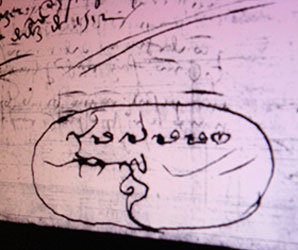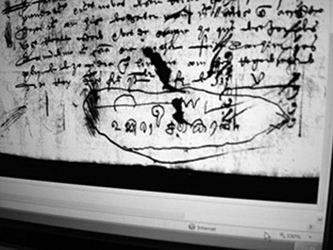In early 2000, I visited Portugal. I had a brief understanding about the history of the Portuguese and Cochin interactions that happened in the 16th and 17th Centuries. I had also read the book, written on Vasco Da Gama by Professor Sanjay Subrahmanium. And yet, I was going there as a tourist. I befriended a native Lisbonian, Antonio Alves, who was a guide with English-speaking skills and a vague understanding about the history of Portugal. He took me everywhere I wanted to go, in his Mercedes Benz.
I should not have been surprised that Antonio knew about 'Cochim'. Vasco da Gama, afterall, is the most celebrated person in Lisbon! At Belem, I saw the huge historic monument of Prince Henry The Navigator, the force behind Portugal's seafaring expeditions, standing with Vasco Da Gama and other explorers looming large, its mouth jutting into the sea. Nearby is the Jeronimo Church and Monastery where his remains are kept. This is where Lisbon prayed and kept vigil, the night before Gama's first sail in search of India and for new avenues of trade. There are also the remains of Lisbon's famous Poet,
Luís Vaz de Camões, who is best remembered for his epic work, 'Os Lusiadas' ( The Lusiads ), which covers Vasco Da Gama's expeditions. I can tell you in complete certainty that Lisbon remembers Cochin.
I visited the famous
University of Coimbra, established in 1290 in Lisbon. An alluring campus situated on top of a hill, with the River Mondego rushing along the foothills. I remembered reading James Michener's beautiful description of the university. Its famous alumni include the Poet, Camoes and Mr. Salazar, the dictator who ruled Portugal in the 20th Century. From there, Antonio took me to the Sentra Palace, where the interior was rustic, yet exquisite, and King Manuel may have occupied it at some point in time. And on to Conimbriga, where there were well-preserved Roman Ruins.
I also visited Torre do Tombo, the National AArchives of Portugal. There, I enquired about the preserved documents from the 1500s and also whether there were records of letters between the King of Cochin, Unni Rama Varma Koil Thirumalpad and King Manuel. The language barriers between me and the support staff there did not help matters. They assured me that they have no records by such a name. ( Later, I realized that Unni Rama Varma Koil was referred to as 'Thirumalpad', a title, in Cochin, which the Portuguese mistook to be 'Trimumpara' and hence, a name search that we'd done that day, came up empty)
The trip to Lisbon, the second time around, produced significantly better results. My friend, Pablo Cools, met me in Lisbon. Pablo's Mother was born in Anjengo( Anchuthengu,a coastal settlement in Trivandrum ), Kerala, as a Dutch descendent. Later, she got married to a Belgian and moved to Europe. Pablo had visited his Grandfather once, at Anjengo as a child, but had lost touch with that Community. He had contacted our Cochin Royal Family website and asked for information regarding an ancestor, Gunther who had worked for the Raja of Cochin. My brother, Kerala Varma, knew a Gunther in Ernakulam, introductions were made and Pablo and his wife Anna, made several visits to Kerala. They have visited the Kalikotta Palace and even met with some of my extended family.
Pablo speaks Portuguese, Dutch and English and had lived in the US for a short period of time. He accompanied me to Torres do Tombo and discovered that all the early documents of Portugal's maritime accomplishments, of reports from Cochin and later from Goa, were all preserved and was uploaded onto their web site ( all in Portuguese). The person in charge, soon, set us up at one of their computers, and before long, we were looking at 'Letters from the Raja of Cochim to King Manuel'. We picked one at random and looked to Pablo for translation. But the writing was in Old Portuguese and he could not decipher it. While we were sitting there feeling disappointed, Pablo was scrolling down the pages and he discovered that the last page had writings in another language. I was shocked to see a signature in Old Malayalam. It appeared to read 'Raja Kalpana' (By order of the Raja) and below it, we could clearly read the words, 'Unni Rama Koil'. Below that, was clearly a signature, with the Royal Emblem drawn on by hand. The signature was the Malayalam alphabet 'Sa', followed by drawings of a 'Pallacku' or Royal Carriage and a Conch Shell, both symbols of the Cochin Royal Emblem. For me, it was a moment of indescribable excitement.

The word we had deduced to be 'Raja Kalpana'

Signature of Unni Rama Koil,
The Raja of Cochin( 1505 )
.jpg)
Royal seal of the Raja of Cochin,
hand drawn and affixed later,
on a letter to Lisbon.
Later research showed that the Raja of Cochin, in 1800, Rama Varma Shakthan Thampuran had also signed the same way.
Further study of the preserved Portuguese documents is well near impossible for me personally, due to language limitations. Very few scholars and historians know Old Portuguese and just a handful of them know Old Malayalam. We live in a completely new world, where languages of yore are almost completely obsolete.
Pablo, Antonio and I visited some other places of interest in Lisbon. At the Maritime Museum where models of the old ships are beautifully displayed, the Caretakers of the Museum showed us around and they were very knowledgeable about the history of the times past.
We visited an antique shop where the owner claimed to be the 17th generation descendent of Vasco Da Gama. We shook hands and laughed at the irony of me, Rama Varma, meeting him. During our conversation, he pointed out that, while Vasco Da Gama was showered with congratulatory messages,fame and acclaim, he did not own any land to call his own and that it was much later in life that the King gave him land and made him the 'Count' of the village over at Vidigueira. He made arrangements so that we could visit Gama's home in Vidigueira. The home now belongs to a private owner but, she was gracious enough to receive us and give us a tour of the house, which of course has seen so many improvements over the years. This was where Gama's body was brought to, from Fort Cochin upon his demise. The remains were later taken to Belem, to the Geronimo church.
For a more detailed and interesting description of how the remains of Vasco Da Gama found various resting places until it found its way to the Santa Maria Church in the Manueline Jeronimo Monastery at Belem, see ' The Career and Legend of Vasco Da Gama ' by Sanjay Subrahmaniam (Pages 11 - 16 ).
.jpg)
The Monument in Belem, Lisbon.
.jpg)
The interior of the Jeronimo Monastry in Belem.
.jpg)
The Discovery Monument - A Stone Sculpture of a Boat.
Pablo also introduced me to Professor. Alberto Tavim. I was curious to know how Portuguese Historians viewed the Portuguese-Cochin History. Dr. Tavim has studied the Old Portuguese documents and his PhD. Thesis was on that subject matter, with an emphasis on the Cochin Jewish community. He has visited Cochin before. I asked him his opinion on the first two voyages of the Portuguese Captains and why they found it relatively easy to pave way for a friendship with the Rajas of Cochin. He felt that the Raja of Cochin at the time stood 'humiliated' by the Zamorin's 'tyranny'. The Moors at Calicut would not allow the Portuguese to secure a stable foothold in Calicut. So, as Dr.Tavim had analyzed, it was a shrewd and mutually beneficial relationship. Tavim also pointed out that Cabral left some Portuguese soldiers behind in Cochin intentionally, to help the Raja of Cochin in fighting the Zamorin.
I asked Dr. Tavim what his thoughts were on the soldier Duarte Pacheco, who was a Hero in Cochin for his battling efforts in keeping the Zamorin at bay. Pacheco was honoured by King Manuel, but later incurred his wrath and ended up dying in penury, in prison. Dr. Tavim felt that the King had interests in more important characters with more allure in the public eye, like Cabral and Vasco Da Gama and that Pacheco was hero, yes, but never considered that exigent.
Upon my request, Dr. Tavim compared the viceroyalties of Albuquerque and Almeida and he concluded that Albuquerque was of stronger character, genuinely believing in the power of the Portuguese Empire. But, he had to contend with several groups engaging themselves in turbulent infighting. Almeida, on the other hand, was seemingly more diplomatic. He wanted the Naval Power to dictate and bring order amongst chaos.
.jpg) Dr. Kocha Varma, Dr.Tavim and Pablo Cools - Outside the Torre do Tombo.
Dr. Kocha Varma, Dr.Tavim and Pablo Cools - Outside the Torre do Tombo.
And to my questions on his thoughts as to why the Portuguese lost out to the Dutch, he said that the answer is extremely complex. Portugal, by that time, had been overrun by Spain and was fighting wars at both ends. In South America, the Dutch had superseded Portugal. So, there was a significant amount of tension. In Cochin, the Jews welcomed the Dutch. The Portuguese had imposed an adoption from the Vettath Thavazhi on the King of Cochin and that brought about a lot of resentment. ( A
Thavazhi refers to a branch of a family. In Cochin, the issue of succession was dictated by tradition and the interference by the Portuguese on this very exceptionally imperative event was vastly begrudged.) The Mutha Thavazhi, then split from the Raja of Cochin and sided with the Zamorin, along with the Raja of Kodungallur and the Jews. They all lined up against the Portuguese.
I could have talked to Dr Tavim for far much longer. His Portuguese perspective, more or less, was in sync with that of premier Cochin historians' ( Padmanabha Menon and Achutha Menon) contentions. He gave me a copy of his book (written in Portuguese) : Judeus E Cristaos-Novos De Cochim; Historia E Memoria (1500-1662) by Jose Alberto Rodrigues Da Silva Tavim.
To watch video clips of visit to Portugal...CLICK HERE


.jpg)
.jpg)
.jpg)
.jpg)
.jpg)